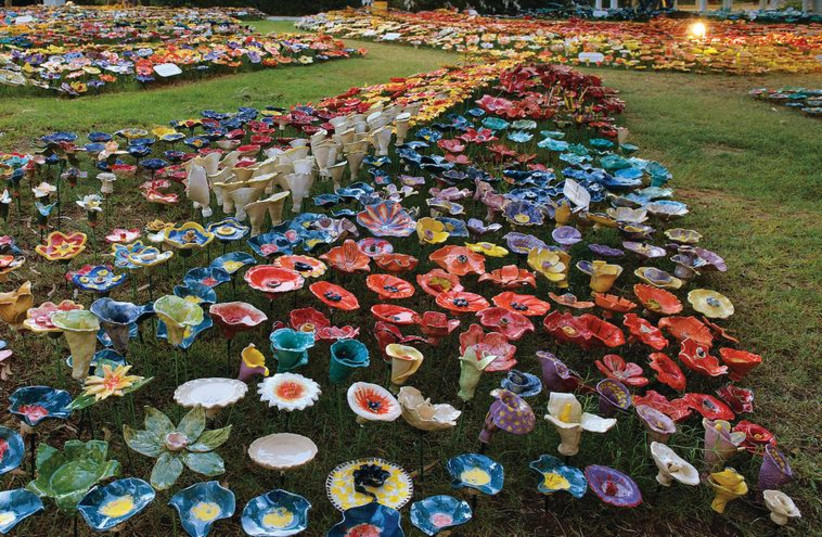Marking the anniversary of the passing of cherished author Meir Shalev, the Eretz Israel Museum in Tel Aviv is paying him a heartfelt tribute with a poignant exhibition. Seamlessly blending his
literary legacy with the museum’s treasury of tools, the show celebrates his enduring influence on Israel’s cultural heritage.
“The exhibition combines unique items from the ‘Man and His Labor’ collection of the museum, a collection which presents and preserves the disappearing world of lifestyles, crafts, and work practices that were common in the area for generations, and its connection to literary texts written by Shalev, who excelled in describing the landscapes and people and who breathed life into the silent work tools in his books,” said Dr. Eli Cohen Sasson, curator of the exhibition.
The exhibition breathes life into Shalev’s evocative portrayals of life in the rustic hamlets of Emek Izrael (Jezreel Valley), echoing the heartbeat of generations past. It cleverly weaves together excerpts from his timeless literary gems, infusing the space with the essence of his narratives.
Unique exhibit at the Eretz Israel museum echoing the spirit of Shalev's books
Against this backdrop, the display showcases an array of rustic tools from the Eretz Israel Museum collection. Through the dialogue between the material – work tools – and the spirit – Shalev’s books – one can appreciate his role as a skilled artisan who based his enchanting texts on comprehensive research conducted during the writing of his books.

Shalev dedicated much of his work to the world of local artisans, with meticulous descriptions of their work and the special tools they used. As he stated in an interview: “Writing is the work of a craftsman. There are many blacksmiths and cobblers. Not everything is melodies and architecture and painting colors on fabric. The book needs to work.”
For example, the exhibition features working tools of stonemasons – all mentioned in the book In His House in the Desert; rare beehives used by beekeepers from his book Russian Romance; and facilities for carrying telegrams from his book A Pigeon and a Boy.
Since Shalev also wrote children’s books, the second floor of the tower gallery is dedicated to children. As a treat, a Ferguson tractor, which served as inspiration for the beloved children’s book The Tractor in the Sandbox, was also brought to the museum, courtesy of the Ein Vered Tractor Museum.
Eretz Israel Museum, 2 Haim Levanon St., Tel Aviv; (03) 6415244; eretzmuseum.org.il/
